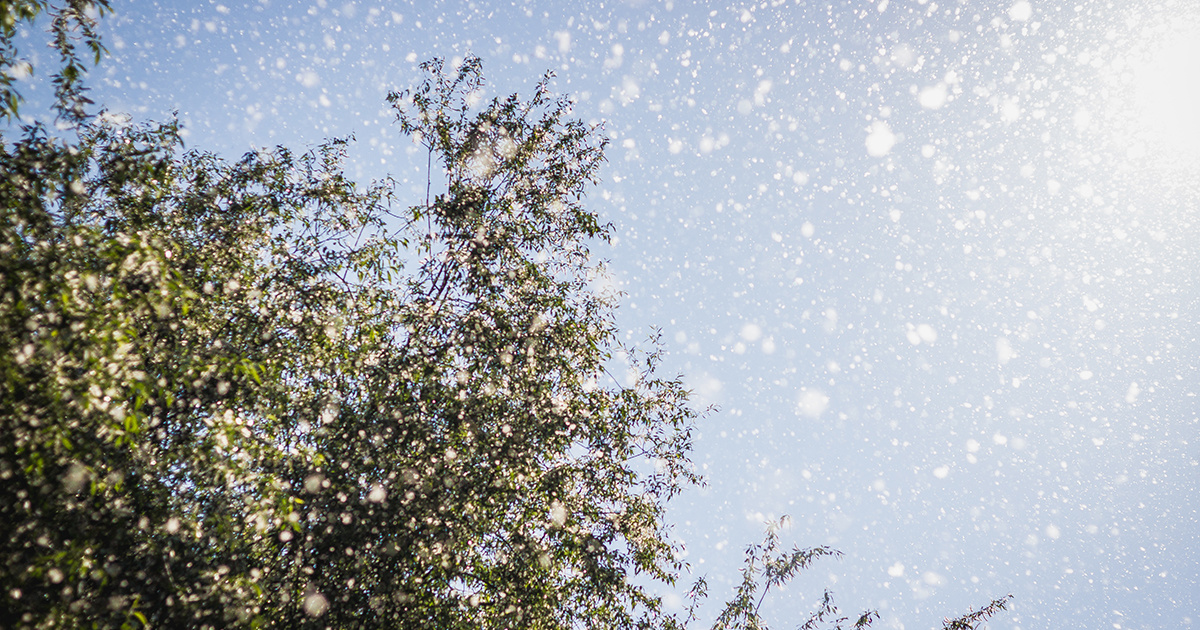

By Kim Knowlton
A new paper just out in The Lancet Planetary Health provides the first global indication that recent temperature increases, propelled by climate change, are in fact contributing significantly to longer and more intense pollen seasons.
Why is this important?
Longer allergenic pollen production seasons and increased pollen intensity could have public health significance if allergy symptoms last longer, require more treatment, or boost numbers of sensitized individuals. This multi-continent investigation highlights important links between ongoing warming and health effects that could worsen as temperatures continue to rise.
An international research team assembled hard-to-find global data sets that recorded health-relevant pollen data, such as pollen season length and pollen production intensity. Seventeen locations across 12 countries had long-term measurement records (~26 years on average) of seasonal pollen concentrations from multiple plant species. These long-term pollen records were analyzed in the context of recent changes in maximum and minimum temperatures associated with human-caused climate change.
Results indicate that 14 of the 17 locations showed increases in seasonal cumulative pollen (pollen load) in recent decades. Similarly, 13 of the 17 locations indicated an increase in season length over time: on average approximately 0.9 days per year longer.
Annual cumulative increases in temperature over time were significantly associated with percent increases in seasonal pollen length and intensity across global locations.
Researchers have already recognized that ongoing climate change can alter allergenic pollen biology in several ways. Warmer temperatures fueled by climate change can mean longer pollen seasons, more pollen produced, and more intensely allergenic pollen. Yet no single tracking system exists to monitor global airborne pollen levels and assess how concentrations may have changed over time in response to rising temperatures.
This is one of the first papers to detect that globally, an ongoing increase in temperature extremes (minimum and maximum) is already contributing to longer pollen production seasons and increased pollen load for several different types of allergenic airborne pollen.
And NASA tells us that 18 of the 19 hottest years on record globally have occurred since the year 2001, fueled by climate change.
It looks like a good time to invest in pollen allergy medication.
It’s really no laughing matter. An estimated 10-30 percent of the global population is affected by seasonal pollen allergies. If you’re one of the hundreds of millions of people worldwide who suffer from pollen allergies, this information isn’t academic—it’s a matter of health. And medication. And costs. And lost days of school and work as eyes water, noses run, and throats itch. Unfortunately for the tens of millions of people with asthma, pollen exposures can also trigger an asthma attack.
Longer pollen seasons mean longer symptom seasons among pollen-sensitized individuals, and higher pollen concentrations are linked to greater symptom severity at a population level. Climate disruptions and increased carbon dioxide concentrations could alter the allergenicity or allergen concentration of the pollen, as well as symptom severity.
These findings are just another reason in the world of reasons to do everything we can to put the brakes on climate change, as soon as possible, as boldly as possible. It is a matter of health.
Kim Knowlton is a senior scientist and deputy director at the Natural Resources Defense Council.

 233k
233k  41k
41k  Subscribe
Subscribe 